The Panzer I Ausf. B Tank
This German Panzerkampfwagen I Ausf. B tank (Sd.Kfz.101) can be found at the Russian Tank Museum, Kubinka, Russia. When used for the invasion of Poland in 1939 It would have had a white cross on the side of the tank and at the rear not the black and white cross it has today.
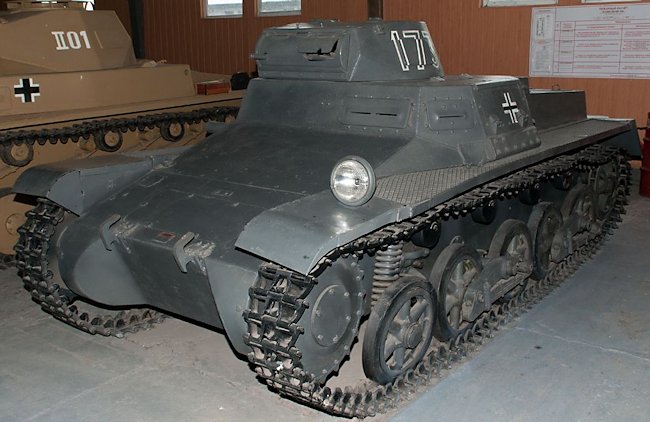
German Panzer I Ausf. B tank at the Kubinka Tank Museum in Russia
Location
Take the train from Moscow's Belorusskaya Railway Station, in the north west of the city, to Kubinka. It is about an hours train journey. It is a direct service, no need to change, and the the tickets are cheap. Make sure you print off a list of station names so you can check off where you are and get ready to get off the train at Kubinka. The station names are not always easy to read or see.
Although this military town has been active for over 80 years it has a rundown look to it. You can walk to the museum but there is the equivalent of a motorway crossing your route. There are no pedestrian crossings over it. There are a number of taxi stands near the station. They are very cheap and honest. I tried to give the driver a big tip but he refused. Ask for his card so you can ask the Museum gate staff to call his company when you are finished at the Museum to get back to the railway station.
Specifications
The Panzer I tank had a crew of two. They were protected by armour that ranged from 7mm to 13 mm that was only thick enough to protect the crew from small arms fire and some artillery shell shrapnel. It was armed with two 7.92 mm MG13 machine guns (Maschinengewehr 13) mounted in a 360 degree rotating turret. The machine gun had a muzzle velocity of 890 m/s (2,900 ft/s) and had a rate of fire of 600 rounds a minute. Its maximum firing range was 2,000m (2,200 yards). The tank weighed 5.4 tonnes.
The tank was powered by a Krupp M 305 four-cylinder air-cooled gasoline petrol engine that produced 59 hp. It had a top road speed of 50 km/h (31 mph) and 37 km/h (23 mph) off road. Its operational range driving on the roads was 200km (120 miles)before it needed to refuel. If it was driving across open ground its range was reduced to around 175 km (109 miles)
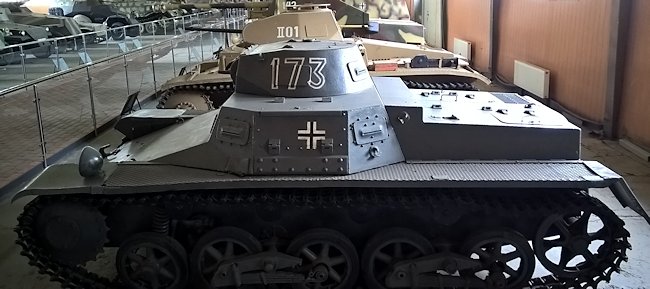
The Panzer I driver had armoured vision slits to the side, rear as well as to the front. The commander also had an armoured vision slit in the rear of the turret.
The Kubinka Panzer I Ausf B
The Russian magazine 'Armour Collection' No.2 of the year 2000 states that this tank was previously equipped with amphious equipment. Any more precise piece of information about this fact is the most welcome
The Panzer I and the German invasion of Poland
German tanks in 1939 were not particularly impressive in terms of either firepower or armour compared with models used later in the war. The majority were light tanks including the machine-gun armed PzKpfw I and the slightly larger PzKpfw Il, which made up three-quarters of the force.
While the PzKpfw I is sometimes dismissed as a training tank, this was certainly not the case. Like most armies of the 1930s, the Germans felt that a machine-gun armament would be adequate for most missions.
Tank-versus-tank fighting was almost unheard of until the Second World War. Previously, the main mission of tanks was seen as defeating enemy infantry. The fighting during the Spanish Civil War (1936—39) made it clear that more attention had to be paid to the enemy tank threat.
In Spain, the Condor Legion's PzKpfw Is stood little chance against Soviet T-26 tanks armed with 45mm guns, and the Nationalists preferred to use captured T-26s rather than the weakly armed German tanks. There were 1,445 PzKpfw I in service in September 1939.
The PzKpfw II was a better design, and its 20mm gun could penetrate the armour of any Polish tank of the period. Nevertheless, such a weapon was of little use in suppressing enemy anti-tank guns or troops in field fortifications. PzKpfw IIs were almost as numerous as the PzKpfw I, with 1,223 in service in September 1939.
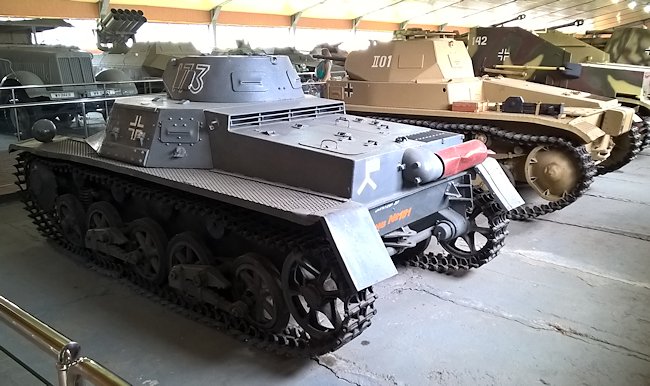
The driver sat on the left side of the tank next to the tank commander unlike many other tanks built in the 1930s where the driver would sit in front of the tank commander.
The light tanks were supported by small numbers of medium tanks. The PzKpfw Ill was a new medium tank armed with a 37mm gun. While it would become the mainstay of the Panzer force in the years of victory in 1940—42, there were only 98 in service in 1939, with a dozen in each Panzer division.
The larger PzKpfw IV was intended to provide fire support for the light tanks and was armed with a short-barrelled 75mm gun; there were 211 in service in 1939, normally six per regiment. In total, these medium types made up only about ten per cent of the Panzer force in 1939.
Germany also benefited from the absorption of the Czech tank force, which was used in two of the light divisions. A total of 196 PzKpfw 35(t) and 78 PzKpfw 38(t) were in service in 1939, representing about eight cent of the Panzer force.
Of the 3,466 tanks available on 1 September 1939, 2,626 were committed to the Polish campaign. Germany also had a significant force of armoured cars, including 718 light armoured cars such as the SdKfz 221, 222 and 223, and 307 heavy armoured cars such as the SdKfz 231 and 232. Armoured cars were used in the reconnaissance regiments of the light, motorised infantry, and Panzer divisions.
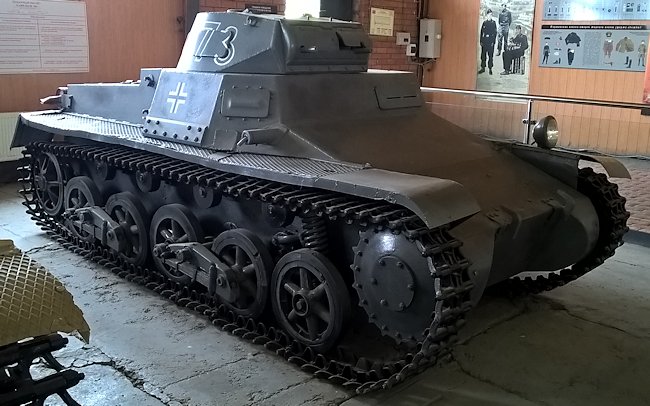
It has been noted how similar the German Panzer I tank design was to the British Vickers 6 ton Tank.
Polish tanks
Poland's armoured force was weak compared to Germany's though not as backward as is so often assumed. Like the Italians, the Poles had been bitten by the tankette fever of the early 1930s and they had based their armoured force on hundreds of small, machine-gun armed TK and T KS tankettes.
Neither vehicle had anti-armour capability and their speed and mobility were poor. They were not really suitable for anything other than direct support, and their premature acquisition served as a dead-weight on further Polish mechanisation.
At the beginning of the September campaign, the Polish army deployed about 450 TK and T KS tankettes in 13 squadrons attached to the cavalry, 17 companies attached to the infantry, and ten platoons attached to armoured trains.
Poland soon recognised the limits of tankettes and turned to Britain with a small order for Vickers 6-ton tanks. A total of 38 were purchased, 16 with 47mm guns and 22 of a twin-turret design with a machine gun in each turret. During the September campaign, these tanks served in the two mechanised brigades. Under the 1936 rearmament programme, Poland began producing an improved version of the Vickers under licence.
The resultant tank, which had a new diesel engine, was the 7TP light tank. The first 40 were completed with twin machine-gun turrets, and the final 95 finished before the war had a new single turret armed with a Bofors 37mm gun. The single-turret 7TP was better than most German tanks in 1939 but there were too few to make much difference.
The Poles equipped two battalions, with a third battalion being formed, and these battalions were independent formations attached at army level for armoured support. Poland attempted to make up the shortfall by acquiring French Somua and British Matilda tanks in 1939, but only received a single battalion of French Renault R-35 infantry tanks just weeks before the start of the campaign.
This battalion was only partially mobilised in 1939 and saw little fighting. Poland also fielded ten armoured trains; a legacy of the 1920 war experience. Armoured trains had proved a vital source of mobile artillery firepower in the war with the Bolsheviks, but, like Zeppelins, they were a technology whose time had passed.
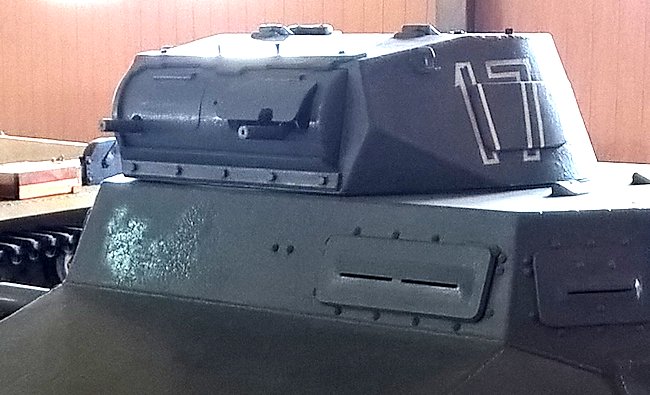
The Panzer I tank was armed with two 7.92 mm MG13 machine guns mounted in a 360 degree rotating turret.
Anti-tank weapons
Anti-tank defence in both German and Polish armies was similar. The German army used the 37mm PaK 36 anti-tank gun, while Polish infantry used the licence-manufactured Swedish Bofors 37mm anti-tank gun. Both had similar performance and could penetrate any tank of the period. In the Polish case, they were deployed in platoons at battalion level for a total of 27 per division.
In the German case, they were deployed in companies at regimental level with 12 guns each. The German infantry divisions had slightly more anti-tank guns than comparable Polish divisions, as they also had a separate anti-tank unit at divisional level in addition to the three companies at regimental level.
Both the German and Polish armies deployed anti-tank rifles for company defence. The German army used the Panzerbusche 38/39, while the Poles used the wz. 35 anti-tank rifle. The two weapons had similar performance; each was able to penetrate about 30mm (l.lin) of armour at 100m (110yds), which was more than adequate against the poorly armoured tanks of the period.
Where can I find other preserved Panzer I Tanks?
- Pz Kpfw I Ausf. A - Akerhus Fort Norway
- Pz Kpfw I Ausf. A - Arsenalen Swedish Tank Museum, Strangnas, Sweden
- Pz Kpfw I Ausf. A - Munster Panzer Museum, Germany
- Pz Kpfw I Ausf. A - El Goloso Museum Spain
- Pz Kpfw I Ausf. A - The Collings Foundation, Stow, MA, USA
- Pz Kpfw I Ausf. B - El Goloso Museum Spain
- Pz Kpfw I Ausf. B - Tank Museum in Kubinka Russia
- Pz Kpfw I Ausf. B - Military Technical Museum, Chernogolovka, Russia
- Pz Kpfw I Ausf. B - Ordnance Museum, Fort Lee, VA, USA
- Pz Kpfw I Ausf. F - Kalemegdan Military Museum Serbia
- Pz Kpfw I Ausf. F - Tank Museum in Kubinka Russia
- Pz Kpfw I Reproduction - Private Collection in Poland
- Source - Pierre-Oliver Buan - http://the.shadock.free.fr/Surviving_Panzers.html
WW2 tank books

